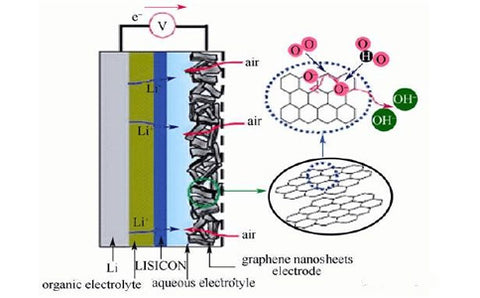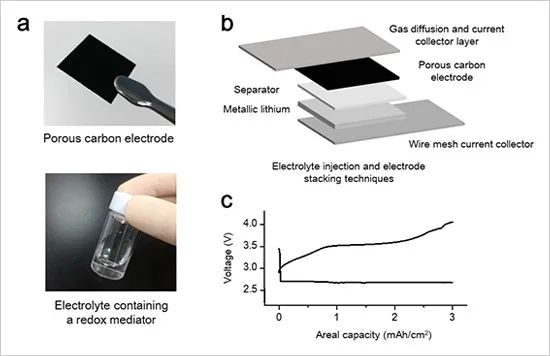Japanese researchers have succeeded in creating a device with significantly higher performance than existing lithium-ion batteries.
Researchers have made new breakthroughs in the energy density and cycle-cycle performance of a new type of battery that could one day replace lithium-ion battery devices.
Researchers at Japan's National Institute of Materials Research (NIMS) have teamed up with SoftBank Corp. to develop a lithium-air battery with an energy density of over 500Wh/kg that can be charged and discharged at room temperature.
The lithium-air battery has a significantly higher energy density than currently used lithium-ion batteries, and the fabrication of lithium-air batteries lays the foundation for wider, and even commercial, applications, the researchers said.
Although scientists have long known that lithium-air batteries have great potential for use as rechargeable batteries, much of this potential is theoretical.
However, the researchers learned in the abstract of the paper published in the journal Materials Horizons that the energy density of conventional lithium-ion batteries is beginning to reach its limits to meet the requirements of advanced energy storage devices such as electric vehicles and unmanned aerial vehicles, which The device charges slowly during the day and discharges at night.
NIMS senior researcher Shoichi Matsuda led the research team, along with many others, to explore alternatives to lithium-ion battery designs.
"Lithium-air batteries (LABs), with energy densities 2 to 5 times that of lithium-ion batteries, are potential candidates for next-generation rechargeable batteries in the aforementioned application areas," the researchers wrote.
The researchers point out that, in fact, only a few high-energy-density Li-air batteries have been fabricated and developed, mainly because Li-air batteries tend to contain a large number of inactive components (e.g., separators and electrolytes), although these inactive components are not involved. chemical reaction, but will make its weight drop. (a) Japan's NIMS and SoftBank Group jointly develop new materials for lithium-air batteries;
(a) Japan's NIMS and SoftBank Group jointly develop new materials for lithium-air batteries;
(b) Battery manufacturing technology developed by the NIMS-SoftBank Advanced Technology Development Center;
(c) Li-air batteries with energy densities over 500 Wh/kg are stable in charge-discharge cycles at room temperature.
possible solutions
The Matsuda R&D team develops materials at the NIMS-SoftBank Advanced Technology Development Center to improve the performance of lithium-air batteries to realize their high energy density potential. They also developed a technique to manufacture these devices for various applications.
A typical Li-air battery is composed of a Li metal foil, a separator, a Li-ion conductive nonaqueous electrolyte, a porous carbon electrode, and a gas diffusion layer.
The researchers explain in their paper: "During the discharge process, the dissolution of lithium metal occurs at the negative electrode. The generated electrons pass through an external circuit to the positive electrode, where they are used to reduce atmospheric oxygen to form insoluble lithium peroxide (Li2O2) as a discharge product. ."
In the study, the researchers found that previously, the device could not realize its potential for high energy density of over 300 Wh/kg because the battery contained excess electrolyte and/or the battery operated at a relatively small areal capacity.
In their paper, they revealed that to create the battery device, the researchers struck a balance between controlling the electrolyte and the areal capacity of the device.
The research team is now developing high-performance battery materials and plans to integrate high-performance battery materials into newly developed lithium-air batteries to further improve battery cycle life, the researchers said. Their goal is to achieve practical use of the battery at the NIMS-SoftBank Advanced Technology Development Center to accelerate the feasibility of battery commercialization.

